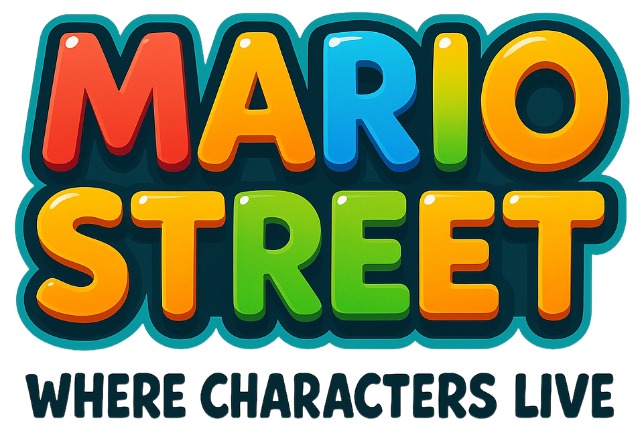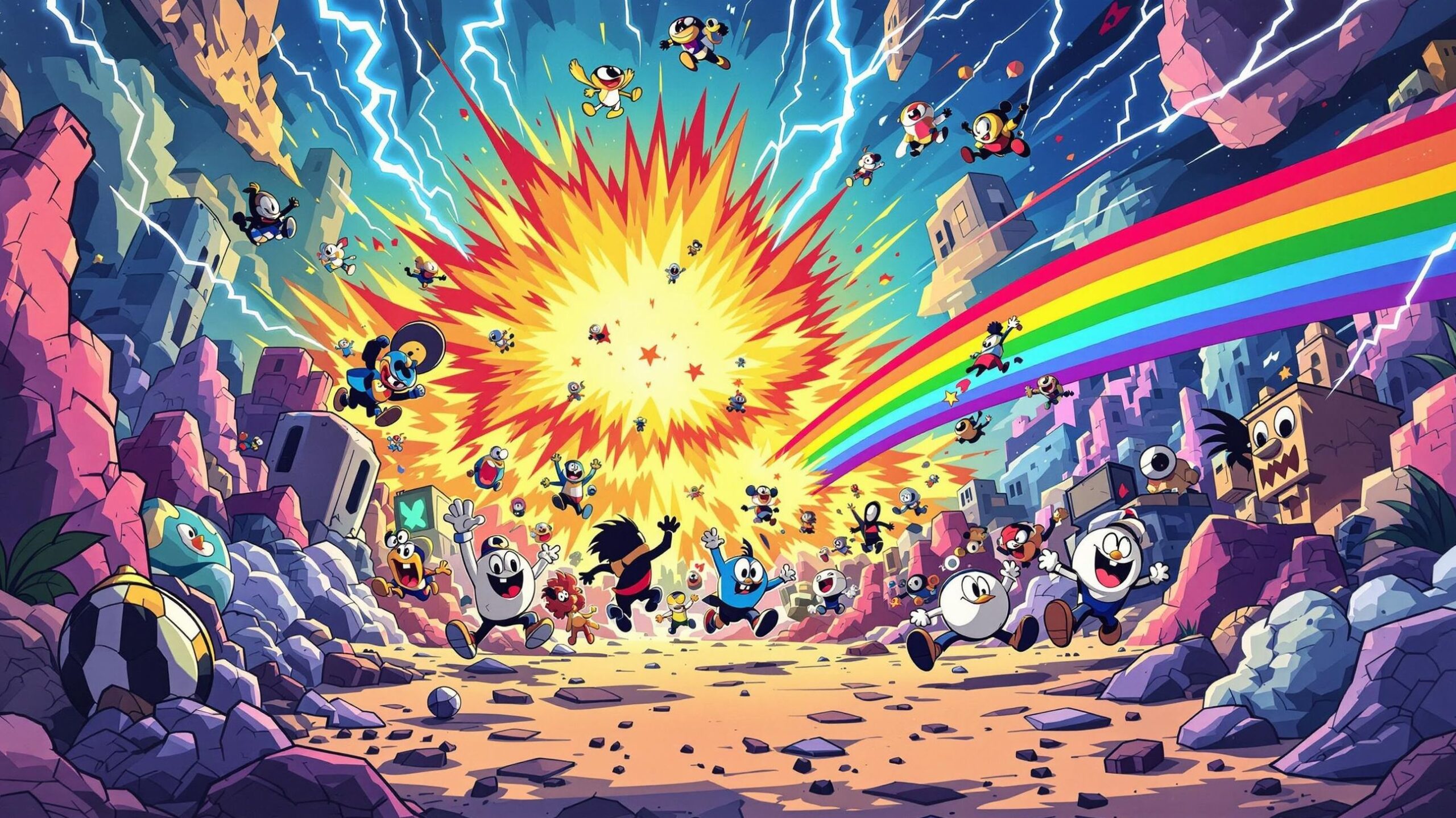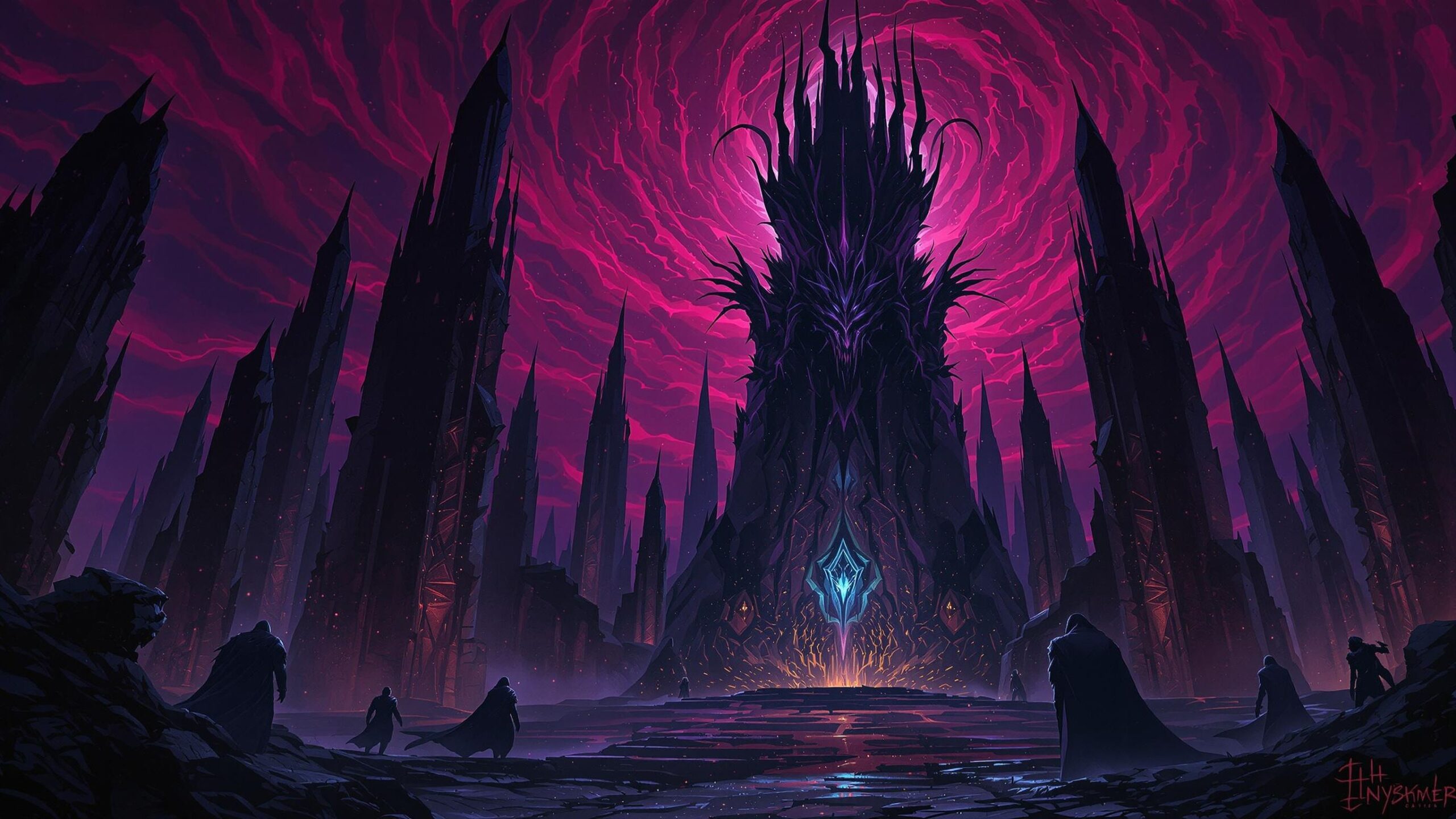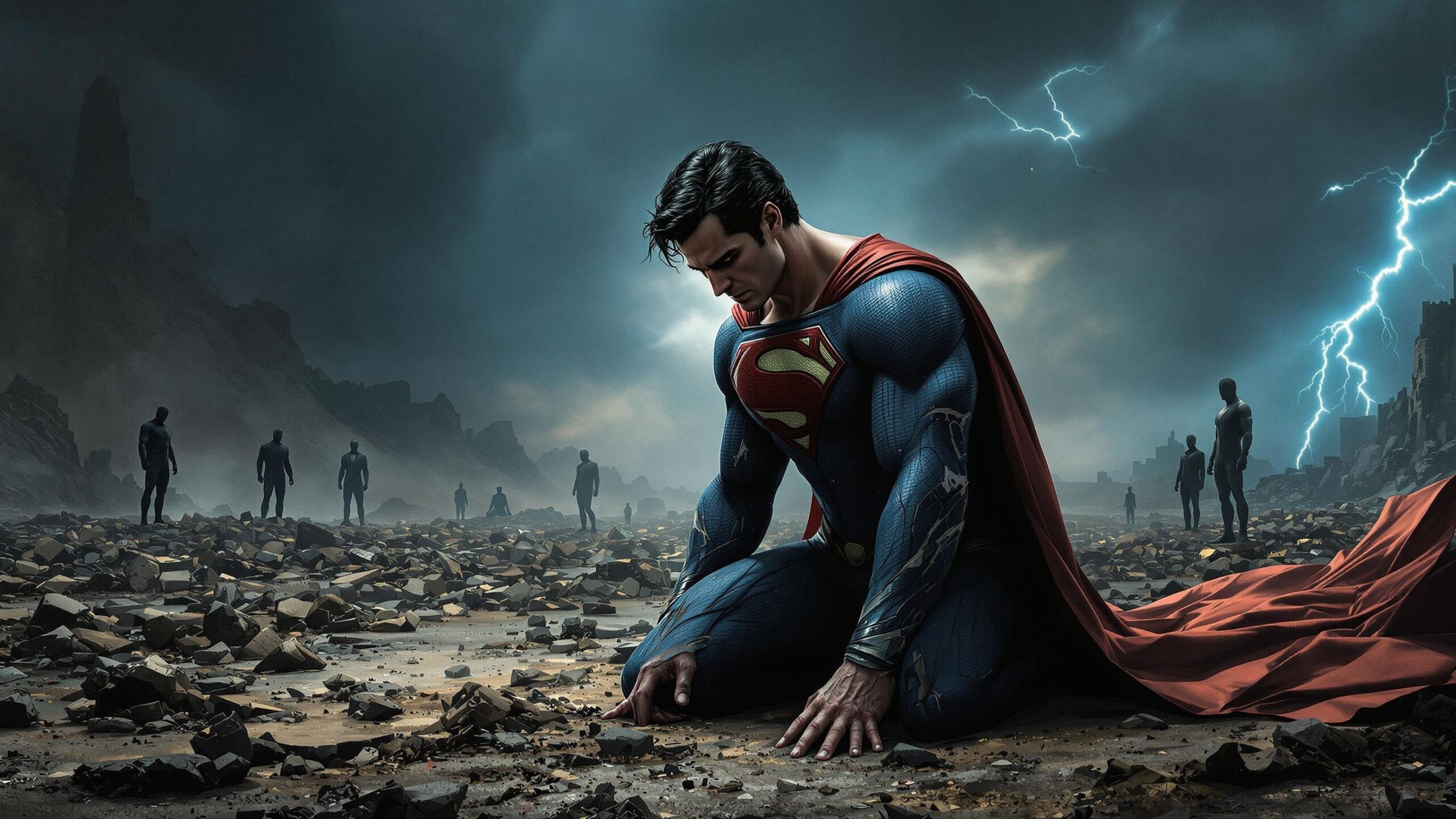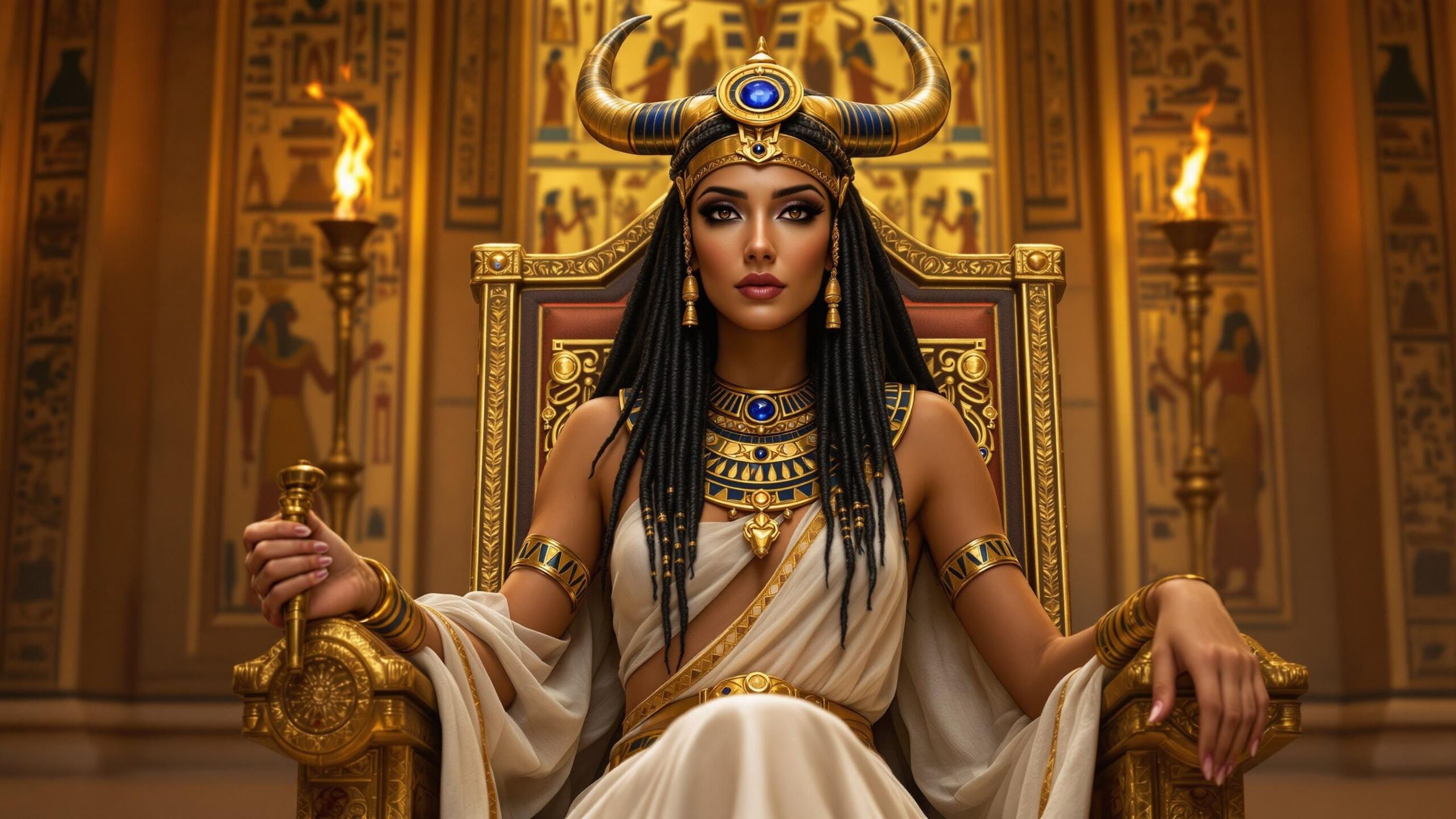From the Saturday morning lineup to prime-time television and streaming platforms, cartoon characters have transcended the confines of animated screens to become household legends. They’ve made us laugh, cry, think, and reminisce. Whether born in the golden age of animation or in modern digital series, these characters aren’t just drawings — they’re icons of pop culture, storytellers of generations, and often, reflections of ourselves. Some have shaped the course of animation history, while others charmed their way into global hearts through humor, depth, or sheer creativity. Here’s a nostalgic and fascinating dive into the Top 10 Cartoon Characters of All Time — a celebration of their stories, their quirks, and their indelible impact on generations of viewers.
#1: Bugs Bunny
Arguably the king of classic cartoons, Bugs Bunny is more than just a wisecracking rabbit with a Brooklyn accent—he’s an emblem of animated charisma and timeless wit. Debuting in 1940’s “A Wild Hare,” Bugs was a product of Warner Bros.’ Looney Tunes and Merrie Melodies, voiced originally by the legendary Mel Blanc. His signature line, “Eh, what’s up, doc?” became not just a catchphrase but a cultural staple. Bugs is defined by his unshakable cool, even under pressure, always one step ahead of his adversaries—whether it’s Elmer Fudd’s clumsy hunting, Yosemite Sam’s temper tantrums, or Daffy Duck’s endless jealousy.
An interesting bit of trivia: Bugs Bunny has a star on the Hollywood Walk of Fame, making him one of the few cartoon characters to receive such an honor. He even appeared at the Academy Awards, and during WWII, he was used in war propaganda films and honored as a patriotic symbol. Bugs wasn’t just a trickster—he was adaptable. He could be suave, hilarious, snide, or kind-hearted, all in one episode, depending on the story and setting. One episode could find him in medieval England, the next in space, or even dueling with opera singers in “What’s Opera, Doc?”—a short that remains one of the most celebrated pieces of animation in history.
Behind the scenes, his creators, including Tex Avery and Chuck Jones, were experimenting with timing, music synchronization, and comedic delivery that would become foundational to animation as a whole. Bugs became a sort of animated everyman, embodying the ideals of the underdog who triumphs with smarts instead of strength. Interestingly, his design evolved over time—early Bugs looked much rougher, with exaggerated features and less polish—but by the mid-1940s, his sleeker, gray-and-white appearance became his signature look.
And of course, who could forget his effortless cross-dressing? Bugs wasn’t just ahead of his time in terms of humor—he blurred gender lines with comfort and style long before it was part of the mainstream cultural conversation. From tricking foes while dressed as a seductive woman to performing ballet, Bugs broke norms with a wink and a carrot. His ability to embody so many roles without losing his identity is what makes him eternally lovable.
With decades of screen time, films, reboots, comic books, and merchandising behind him, Bugs Bunny isn’t just a cartoon character—he’s an animated legend who paved the way for all who followed. Whether you’re five or fifty, when Bugs shows up on screen, it’s impossible not to grin and lean in closer.
#2: Mickey Mouse
If Bugs Bunny is the rebel king of cartoons, Mickey Mouse is the smiling monarch of all things animated. Created in 1928 by Walt Disney and Ub Iwerks, Mickey made his first appearance in the short film “Steamboat Willie.” With just black and white animation and synchronized sound, Mickey not only heralded the arrival of talking cartoons but also launched the global Disney empire. His simple design—a round head, circular ears, red shorts, yellow shoes, and white gloves—became one of the most recognizable silhouettes in the world.
Interestingly, Mickey wasn’t Disney’s first creation. Oswald the Lucky Rabbit came before him, but when Walt lost the rights to Oswald, he and Iwerks returned from a fateful train ride with a sketch of a plucky mouse that would change history. Mickey’s early shorts had a mischievous tone—he played pranks, chased girls, and even smoked cigars. But as he grew in popularity, especially among children, his character softened into the optimistic, polite, all-American figure we know today.
Mickey’s voice was originally performed by Walt Disney himself, which added a personal touch to the character. His iconic high-pitched tone, coupled with his can-do attitude and relentless cheerfulness, made him the face of family-friendly entertainment for nearly a century. Over time, Mickey appeared in more than 130 films, starred in comic strips, headlined his own TV shows, and eventually became the cornerstone of Disneyland and Disney World.
There are so many hidden gems in Mickey’s history. He was the first animated character to earn a star on the Hollywood Walk of Fame. In the 1932 Academy Awards, Walt Disney received an honorary Oscar for creating Mickey Mouse. And when Apollo 11 astronauts went to the moon, they brought along drawings of Mickey and friends as symbolic mascots. Even today, Mickey appears in a variety of media formats—from “The Wonderful World of Mickey Mouse” to cameos in video games like “Kingdom Hearts.”
Yet despite his commercial success, Mickey has a quiet versatility. In “Fantasia,” he became the Sorcerer’s Apprentice—one of his most visually stunning roles, drenched in classical music and dark imagination. In “Mickey’s Christmas Carol,” he embodied the heartwarming everyman Bob Cratchit. His personality balances courage with kindness, and though he’s not as zany as Bugs or edgy as modern characters, Mickey’s unwavering sense of good has made him a timeless icon of joy and decency.
Mickey Mouse isn’t just a cartoon character—he’s a global ambassador of animation and a symbol of magic, dreams, and enduring positivity. With just a squeaky voice and an indelible smile, he became the cornerstone of an entire world of imagination.
#3: Homer Simpson
With his balding head, donut addiction, and lazy drawl, Homer Simpson might be the most profoundly human cartoon character ever created. First appearing in 1987 as a short on “The Tracey Ullman Show” before launching into full episodes in 1989, Homer has been the heart—and often the punchline—of The Simpsons for over three decades. Voiced by Dan Castellaneta, Homer is the embodiment of the average American man: flawed, funny, lovable, and often bafflingly clueless.
Homer works as a safety inspector at Springfield’s nuclear power plant, though he rarely demonstrates any qualifications for the job. What makes Homer endlessly entertaining is his complete lack of filter, impulsiveness, and surprising moments of insight. One moment he’s forgetting his own children’s names, the next he’s delivering a speech that hits right in the feels. His famous catchphrases—“D’oh!”, “Mmm…donuts,” and “Woohoo!”—have entered everyday language and even earned entries in dictionaries.
Interestingly, Homer’s character was partly inspired by classic sitcom dads like Jackie Gleason’s Ralph Kramden but evolved into something far more absurd and multifaceted. At times, Homer has been a rock star, an astronaut, a boxer, and even the mayor. These wild plotlines somehow never feel out of place because Homer’s core character remains consistent: a well-meaning buffoon who loves his family more than anything, even if he often forgets to show it in conventional ways.
One hidden gem is that the numbers on Homer’s head and hair form the initials “M” and “G”—a tribute by creator Matt Groening to his own name. Another Easter egg is the number of times Homer’s job title changes—it’s estimated to be over 200 different roles throughout the show. Homer’s charm lies in his unpredictability: you never quite know what he’ll say or do, but you always know it’ll be hilarious or heartbreaking—or both.
What’s remarkable is Homer’s staying power. The Simpsons has become the longest-running American sitcom and animated series of all time, and much of that success rests on Homer’s shoulders. He reflects society’s indulgences, idiocies, and insecurities, yet he also mirrors our deepest hopes and affections. He’s the type of character who, despite his endless mistakes, always finds his way back to his couch—and his family.
Love him or shake your head at him, Homer Simpson represents a perfect blend of satire, slapstick, and sincerity. He’s not a superhero, a genius, or even particularly competent, but in all his flawed glory, he’s one of the most relatable and enduring characters in animation history.
#4: SpongeBob SquarePants
Who lives in a pineapple under the sea and somehow conquered pop culture on land? SpongeBob SquarePants. Since his debut on Nickelodeon in 1999, SpongeBob has become a symbol of boundless optimism, quirky humor, and surreal storytelling. Created by marine biologist-turned-animator Stephen Hillenburg, SpongeBob was unlike any cartoon character that had come before—an excitable, square yellow sponge with a childlike spirit, buck teeth, and a laugh that could pierce time and space.
Working at the Krusty Krab as a fry cook, SpongeBob approaches everything in life—from jellyfishing to bubble blowing—with pure enthusiasm. His world in Bikini Bottom is filled with bizarre and lovable characters: his grumpy neighbor Squidward, his dim-witted best friend Patrick Star, the entrepreneurial Mr. Krabs, and even a karate-chopping squirrel named Sandy Cheeks. Each episode is a trip into the absurd, full of visual gags, slapstick, wordplay, and sometimes even philosophical depth.
One of the most interesting facts about SpongeBob is that he’s ageless—not in the sense of time, but in character. While he has a job and responsibilities, he maintains the innocence, curiosity, and joy of a young child. That’s a big reason why adults relate to him just as much as kids do—he represents the untarnished hope we sometimes lose along the way.
The show exploded into popularity almost immediately, spawning movies, merchandise, theme park attractions, and even memes that dominate the internet today. It’s also one of the most quoted animated series of all time, with gems like “I’m ready!”, “Is mayonnaise an instrument?”, and “The best time to wear a striped sweater is all the time.” What sets SpongeBob apart is his emotional authenticity—he isn’t afraid to cry, to fail, or to care too much, and that vulnerability has made him deeply endearing.
Behind the scenes, Hillenburg was adamant about keeping SpongeBob free of cynicism, and it shows. Even in the later seasons and spin-offs, the show retains a kind of zany charm that makes it hard to look away. Whether he’s annoying Squidward or overachieving at boating school, SpongeBob finds joy in the little things—and teaches us to do the same.
In a world that can sometimes feel jaded, SpongeBob SquarePants is a refreshing reminder of why we fell in love with cartoons in the first place. He’s bright, bizarre, and beautifully bizarre—exactly what a great cartoon character should be.
#5: Scooby-Doo
No mystery about it—Scooby-Doo is one of the most beloved and enduring cartoon characters of all time. Since his debut in 1969’s Scooby-Doo, Where Are You!, this cowardly but lovable Great Dane has been solving spooky mysteries and making audiences laugh for over five decades. Created by Joe Ruby and Ken Spears for Hanna-Barbera, Scooby quickly became the centerpiece of a franchise that includes dozens of television shows, movies, comic books, video games, and merchandise galore.
Scooby’s full name—Scoobert Doo—was reportedly inspired by Frank Sinatra’s “Strangers in the Night,” specifically the nonsensical “dooby-dooby-doo” line at the end. His signature phrases like “Ruh-roh!” and “Scooby-Dooby-Doo!” are instantly recognizable, even to people who’ve never seen an episode. Voiced originally by Don Messick, Scooby’s personality blends the goofy heart of a scaredy-cat with a surprising streak of bravery—usually brought out by the promise of a Scooby Snack.
Scooby is a key member of Mystery Inc., alongside Shaggy, Fred, Daphne, and Velma. While Fred leads and Daphne often stumbles into traps, it’s Scooby and his best pal Shaggy who steal the show with their comical cowardice, insatiable appetites, and accidental heroism. Their dynamic is pure animated gold—two reluctant investigators constantly running from trouble, only to end up foiling the villain anyway.
What’s fascinating about Scooby is how flexible the franchise has been across decades and generations. From the classic monster-of-the-week formula to crossover specials featuring everyone from Batman to the Harlem Globetrotters, Scooby has remained both consistent and reinventable. His animated legacy includes darker reboots like Scooby-Doo! Mystery Incorporated and theatrical films that introduced him to new audiences. Through every iteration, though, Scooby has remained the loyal, goofy, slightly magical dog we know and love.
Anecdotally, Scooby-Doo was once credited by a psychologist as being one of the few shows in which children learned deductive reasoning through entertainment. The formulaic reveal—“Let’s see who this ghost really is!”—taught problem-solving and critical thinking in a lighthearted format. And though the show often poked fun at the supernatural, it always ended by unmasking real-world culprits, subtly teaching kids that monsters are usually just people in disguise.
Scooby-Doo’s universal appeal lies in his imperfections. He’s scared, lazy, and easily distracted—but when it really counts, he’s there for his friends. That combination of humor, heart, and heroism has earned Scooby a permanent spot in animation royalty. He’s the dog who bumbles his way to greatness, and we wouldn’t want him any other way.
#6: Tom and Jerry
One of the most iconic duos in cartoon history, Tom and Jerry have been locked in a hilariously violent game of cat-and-mouse since 1940. Created by William Hanna and Joseph Barbera, this pair of silent rivals revolutionized slapstick animation, proving that a cartoon could be completely entertaining without a single word of dialogue. Tom, the grey house cat, and Jerry, the clever little brown mouse, engage in a never-ending battle of wits, chaos, and comedic mayhem that has stood the test of time.
Interestingly, their original names were Jasper and Jinx, but they were quickly rebranded as Tom and Jerry after a studio-wide contest. Over the decades, their basic dynamic never changed—Tom devises elaborate plans to catch Jerry, and Jerry inevitably turns the tables in clever and painful ways. But it wasn’t always so black and white. Some episodes flipped the roles, showing Tom as the underdog or the one minding his own business, while Jerry instigated the trouble. That complexity made their relationship richer and more compelling than a simple good vs. evil scenario.
Despite their almost total lack of dialogue, the physical comedy in Tom and Jerry was masterfully choreographed, often timed to music with precision that rivaled live-action comedians like Buster Keaton or Charlie Chaplin. The orchestral scores—composed by legends like Scott Bradley—elevated each gag into something musical, almost balletic. In fact, Tom and Jerry won seven Academy Awards for Best Animated Short Film, a feat very few other series have achieved.
There are countless hidden gems in the Tom and Jerry legacy. In one episode titled “The Cat Concerto,” Tom plays a piano performance of Liszt’s Hungarian Rhapsody No. 2 while Jerry creates havoc inside the instrument—a sequence that’s often cited as a masterclass in timing and animation. Another lesser-known fact: both characters have traveled the world in various reboots, including settings in ancient Egypt, medieval times, and even space, proving the formula is as flexible as it is timeless.
Although criticized at times for its cartoon violence, the exaggerated nature of their battles—sledgehammers, anvils, firecrackers—has always been rooted in the laws of classic cartoon physics. Nothing fatal ever happens; it’s about the chase, the laughs, and the surprising tenderness that sometimes sneaks in between the chaos. On rare occasions, Tom and Jerry have even shown moments of friendship, particularly when faced with a greater threat, and those moments feel oddly touching.
Tom and Jerry’s endless chase is more than just a battle of instincts—it’s a symbol of persistence, rivalry, and the absurdity of conflict itself. Over 80 years later, their antics are still drawing laughs from audiences around the globe, proving that sometimes, silence really is golden.
#7: Bart Simpson
Eat my shorts! With that rebellious catchphrase, Bart Simpson cemented his place as one of television’s most influential cartoon characters. First appearing in 1987 alongside his family in The Simpsons, Bart became a cultural lightning rod in the early ’90s. With his spiky yellow hair, skateboard, slingshot, and devil-may-care grin, he quickly evolved into the ultimate cartoon troublemaker—part Dennis the Menace, part punk rock mascot, and entirely unforgettable.
Voiced by Nancy Cartwright, Bart is the eldest Simpson child and a 10-year-old force of chaos in the town of Springfield. He’s the kind of kid who’d prank call Moe’s Tavern, cheat on a test, get an F, and then somehow charm his way out of trouble. But beneath the wisecracks and mayhem lies a surprisingly complex character. Bart’s vulnerability peeks through in episodes where he deals with failure, rejection, or loneliness, and those moments give him a depth many other animated kids don’t achieve.
During the show’s early seasons, Bart was the face of The Simpsons. His image was plastered on T-shirts, lunchboxes, and even bootleg merchandise that got banned from schools for being too “subversive.” Schools across America reportedly saw spikes in students quoting Bart’s most rebellious lines, much to the horror—and secret amusement—of adults everywhere. The phenomenon became so large that in 1990, Time magazine featured Bart on its cover with the tagline “The Bad Boy of the ’90s.”
Yet Bart’s appeal isn’t just about bad behavior. He’s got heart. He deeply loves his family, even if he rarely shows it in traditional ways. His relationship with Homer swings wildly between outright warfare and genuine father-son bonding. His friendship with Milhouse, his bullying of Principal Skinner, his rivalry with Lisa—all reflect a kid trying to figure out his place in the world.
Interestingly, Bart is one of the few cartoon characters who never ages. He’s perpetually in fourth grade, perpetually rebellious, and perpetually hilarious. This time-loop effect makes every generation feel like Bart is “their” character. Whether he’s building a soapbox racer, stealing the school’s headmaster statue, or selling his soul for five bucks, Bart remains a symbol of youthful rebellion, clever pranks, and the sheer joy of being a kid who refuses to play by the rules.
For over 35 years, Bart Simpson has served as the voice of childhood mischief. He’s irreverent, incorrigible, and yet undeniably charming—an animated rebel with just enough heart to make us root for him, even when he’s driving everyone in Springfield absolutely crazy.
#8: Daffy Duck
The eternal second fiddle with a volcanic personality, Daffy Duck is one of the most versatile and enduring characters to ever grace the animated screen. Created in the 1930s by Tex Avery and Bob Clampett for Warner Bros.’ Looney Tunes, Daffy burst into animation history with a frenetic energy and manic behavior that set him apart from his contemporaries. Unlike Bugs Bunny’s calm, confident cool, Daffy was loud, chaotic, insecure, and absolutely unfiltered—traits that made him endlessly funny and deeply relatable.
Daffy’s early characterization was that of a zany, unhinged duck with a wild laugh and a penchant for mischief. As the decades passed, especially under the creative direction of Chuck Jones, Daffy evolved into a more complex figure—often jealous, self-absorbed, and bitter, particularly when paired against Bugs. This rivalry is where some of Daffy’s best moments come alive. Episodes like “Duck Amuck” and “Rabbit Seasoning” are animation gold, with Daffy being hilariously tormented by unseen animators or tricked repeatedly by Bugs’ wordplay and wit. His repeated, frustrated cry of “You’re despicable!” is iconic, and one of the most quoted lines in cartoon history.
What makes Daffy so compelling is his tragicomic essence. He wants to be the star, the hero, the beloved favorite—but things always go wrong. Whether it’s being upstaged by Bugs, misunderstood by Elmer Fudd, or spiraling into complete narcissism, Daffy’s failures make him sympathetic in a way that perfect characters can never achieve. He’s the underdog that never gives up, no matter how many anvils fall on his head or how often his plans backfire.
There’s an artistic brilliance to Daffy’s character that often goes underappreciated. In “Duck Amuck,” he’s literally deconstructed—stripped of his environment, his voice, even his form—in a meta-commentary on character identity and creator control. Few cartoons have dared to experiment like that, and Daffy was the perfect vehicle for such bold storytelling. Behind the voice was the legendary Mel Blanc, whose exaggerated delivery and elastic vocal range gave Daffy a distinct sound that could shift from frantic to pathetic in a split second.
Beyond the classic shorts, Daffy has remained a fixture in pop culture through shows like The Looney Tunes Show, Tiny Toon Adventures, and Space Jam. In many modern iterations, he’s portrayed as even more of a clueless egomaniac—but always with a touch of affection from the writers. Whether he’s a selfish roommate, a wannabe magician, or a bad actor auditioning for Porky Pig, Daffy’s misadventures continue to earn laughs.
Daffy Duck is the lovable loser who never stops trying, the lunatic duck whose tantrums and delusions are endlessly entertaining. His wild extremes—from grandeur to self-pity—remind us of the beauty of flawed ambition. He may never beat Bugs Bunny, but in the hearts of many fans, he’s already won.
#9: Pikachu
Pika-pika! With two syllables and a bolt of electricity, Pikachu vaulted from the Japanese anime scene into a full-blown global sensation. As the face of the Pokémon franchise since its international debut in the late 1990s, Pikachu isn’t just a cartoon character—he’s a worldwide symbol of cuteness, friendship, and adventure. While originating from video games, Pikachu’s role in the animated series Pokémon secured his legendary status in animation history.
With his chubby cheeks, lightning bolt tail, big expressive eyes, and bright yellow fur, Pikachu was designed to be adorable—but he’s far more than a cute mascot. In the anime, Pikachu is the loyal companion of Pokémon Trainer Ash Ketchum, and their friendship forms the emotional core of the series. Pikachu starts off as an aloof, even hostile character who refuses to get inside a Poké Ball. But over time, and after Ash risks his life to protect him from a flock of angry Spearows, Pikachu grows affectionate and deeply bonded to his trainer.
Voiced by Ikue Ōtani, Pikachu expresses a wide range of emotions despite only ever saying variations of his name. It’s a testament to voice acting and animation how audiences can feel Pikachu’s joy, sorrow, defiance, or concern with just a change in tone and facial expression. His electric attacks, especially the signature “Thunderbolt,” became signature moments of action and tension in the show, and he frequently took down Pokémon many times his size—sometimes even legendaries.
The Pokémon anime ran for over 25 years, and Pikachu was there every step of the journey. Whether battling Team Rocket for the thousandth time, learning life lessons alongside Ash, or showing kindness to new Pokémon, Pikachu became a constant—always dependable, always expressive. He also starred in several animated movies, most notably Pokémon: The First Movie, where Pikachu’s tears in the climax stirred real-world tears in movie theaters around the world.
Pikachu’s popularity has no bounds. He’s been on planes, currency, national monuments, and even became Japan’s official ambassador for the 2014 World Cup. Pikachu parades are held in Japan where dozens of mascots dance in perfect choreography. In 2019, Pikachu even starred in a live-action film, Detective Pikachu, where he was voiced by Ryan Reynolds, giving the character a completely new layer of depth and humor.
Despite all this fame, Pikachu’s essence remains simple: he’s loyal, brave, affectionate, and sometimes hilariously stubborn. In every thunderous battle and heartfelt moment, Pikachu reminds us of the power of friendship and the enduring magic of a character who doesn’t need words to speak to our hearts.
#10: Popeye
Before superheroes took over the box office, Popeye the Sailor was already proving that muscles, spinach, and grit could save the day. Making his first appearance in 1929’s Thimble Theatre comic strip by Elzie Crisler Segar and later in animated shorts by Fleischer Studios, Popeye became one of the most influential cartoon characters of the 20th century. With his bulging forearms, anchor tattoos, corncob pipe, and raspy mutterings, Popeye was a rough-and-tumble everyman who lived by one simple truth: when in doubt, eat your spinach.
Popeye’s animated debut in 1933 turned him into a sensation. The black-and-white shorts were known for their surreal animation, jazz soundtracks, and action-packed storytelling. Popeye’s main foil was the brutish Bluto (later Brutus), and most plots revolved around the two competing for the affections of the lanky, high-voiced Olive Oyl. No matter how badly Popeye was beaten, he always managed to turn the tide by downing a can of spinach, which instantly supercharged him and turned him into a one-man wrecking crew.
What many don’t know is that Popeye’s popularity was so intense during the 1930s that he rivaled Mickey Mouse in box office appeal. In fact, spinach sales in the United States reportedly spiked due to the character’s influence—so much so that the spinach industry credited Popeye with increasing consumption by 33%. That’s not just cartoon impact—that’s real-world influence.
Popeye’s gruff exterior was paired with a moral code that made him the defender of the downtrodden. He often stepped in to protect the weak, stand up to bullies, and champion the underdog. His muttered speech was filled with quotable gems like “I yam what I yam” and “That’s all I can stands, I can’t stands no more!” which became slogans for generations of fans. Even his theme song—“I’m Popeye the Sailor Man”—remains instantly recognizable.
The character saw various revivals through the decades, including color TV cartoons, a 1980 live-action film starring Robin Williams, and plans for reboots that never quite materialized. Yet his presence has remained steady in pop culture. Popeye was a sailor, a brawler, a romantic, and a vegetarian role model all rolled into one.
Popeye’s charm lies in his contradictions: he’s gruff but kind-hearted, impulsive yet principled, cartoonish yet surprisingly grounded. In an age before capes and cosmic powers, Popeye reminded audiences that strength isn’t just about muscles—it’s about heart, loyalty, and a big helping of spinach.
From rabbits and mice to ducks, kids, and electric rodents, these ten cartoon characters have left a lasting mark not just on animation, but on global culture. Each one brought something special to the table: laughs, lessons, catchphrases, or pure visual artistry. What unites them is their power to connect with audiences of all ages across generations. They may be drawn with ink and pixels, but their stories are etched into our hearts.
